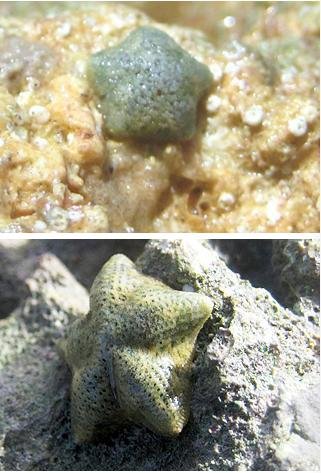The sea stars Cryptasperina hystera and C. pentagona are close relatives with very different ways of reproducing but difficult to tell apart. A new study shows the species separated just a few thousand years ago. Credit: Jon Puritz/University of Hawaii at Manoa
DAVIS, Calif., July 24 (UPI) -- How quickly can new species evolve? A study of Australian sea stars suggests it can happen in as little as 6,000 years, researchers in California say.
"That's unbelievably fast compared to most organisms," said Rick Grosberg, professor of evolution and ecology at the University of California, Davis, and co-author of the study.
On land, groups of plants and animals can be physically isolated by mountains or rivers and then diverge and evolve until they can no longer interbreed even if they come in contact again, researchers said.
Grosberg and his colleagues said they wanted to know how new species arise in the ocean.
They studied two closely related "cushion stars," Cryptasperina pentagona and C. hystera, living on the Australian coast on the Coral Sea.
Although identical in appearance, they live in separate regions and their breeding mechanisms are completely different.
"It's as dramatic a difference in life history as in any group of organisms," Grosberg said.
The researchers looked at DNA sequences of both species and estimated the length of time since the species diverged.
The findings suggest they did not diverge slowly with genetic changes over a long period of time but were isolated quickly, researchers said.
The boundary between cold and warm water in the Coral Sea fluctuates north and south, they said, and a small population of ancestral sea stars might have colonized a remote area at the southern end of the range then been isolated by one of these changes in ocean currents.















